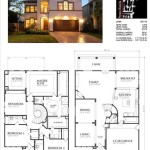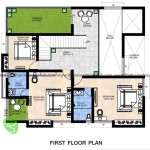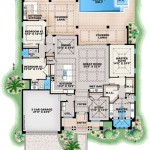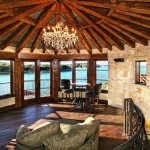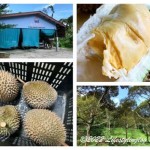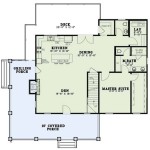Coturnix Quail Housing Plans: Free Printable Options for Beginners
Coturnix quail are increasingly popular for backyard poultry enthusiasts and small-scale farmers. Their rapid growth, early egg production, and minimal space requirements make them an attractive option compared to traditional chickens. Ensuring the well-being of these birds, however, starts with appropriate housing. This article explores various free, printable Coturnix quail housing plans and considerations for constructing suitable accommodations, including cage design, pen dimensions, and essential features.
Selecting the right housing depends on several factors, including the number of quail being housed, the intended purpose (meat or egg production), the available space, and the climate. While commercially available coops exist, building a custom housing structure offers cost savings and allows for tailoring the environment to specific needs. Free, printable plans provide a valuable resource for those seeking a DIY approach.
Understanding the Basic Requirements for Quail Housing
Before exploring specific plans, it is critical to understand the fundamental needs of Coturnix quail. These include protection from predators, weather elements, and injury, as well as provision of adequate space, food, and water. Quail are ground-dwelling birds, so housing designs must accommodate their natural behaviors.
Predator protection is paramount. Quail are vulnerable to various predators, including cats, dogs, foxes, raccoons, and birds of prey. Therefore, housing structures must be securely enclosed with wire mesh or solid materials. Secure latches and reinforced structures are essential to prevent entry by persistent predators.
Weather protection is another critical consideration. Quail are susceptible to extreme temperatures and adverse weather conditions. Housing should provide shelter from rain, wind, and direct sunlight. In colder climates, insulated housing may be necessary to prevent hypothermia. Adequate ventilation is also important to prevent the buildup of ammonia and moisture, which can lead to respiratory problems.
Injury prevention is also important to consider. Quail can be easily injured by sharp edges, protruding wires, or overly high structures. Housing should be designed with smooth surfaces and low heights to minimize the risk of injury. Appropriate flooring materials are also essential to prevent foot problems, such as bumblefoot.
Space requirements are a key factor in determining the size of the housing structure. As a general guideline, allow at least one square foot of floor space per quail. Overcrowding can lead to stress, aggression, and decreased egg production. For meat production, slightly more space may be required to promote optimal growth.
Finally, the housing must facilitate easy access for feeding, watering, and cleaning. Regular cleaning is essential to maintain a healthy environment and prevent the spread of disease. Feeders and waterers should be easily accessible to the quail and designed to minimize waste and contamination.
Common Types of Free Printable Coturnix Quail Housing Plans
Numerous free, printable plans are available online for various types of Coturnix quail housing. These plans range from simple wire cages to more elaborate tractor-style coops. The best option will depend on individual needs and preferences.
Wire cages are a common and relatively inexpensive option for housing quail. These cages typically consist of a wire mesh frame with a wire mesh floor. The cages can be suspended above the ground or placed on a solid surface. Wire cages offer good ventilation and are easy to clean. However, they may not provide adequate protection from harsh weather conditions. Printable plans for wire cages often include instructions for building the frame, attaching the mesh, and adding features such as feeders, waterers, and egg collection trays.
A-frame coops are another popular option. These coops have a triangular shape, providing a sheltered space for the quail. A-frame coops can be constructed from wood, metal, or a combination of materials. They offer better protection from the weather than wire cages and can be easily moved. Printable plans for A-frame coops typically include instructions for building the frame, adding siding, and incorporating a wire mesh floor or run.
Tractor-style coops, also known as "quail tractors," are mobile coops that can be moved to fresh pasture regularly. These coops typically have a wire mesh bottom that allows the quail to graze on the grass. Tractor-style coops offer several advantages, including access to fresh forage, reduced manure buildup, and improved soil fertilization. Printable plans for tractor-style coops often include instructions for building the frame, adding wheels or skids, and incorporating a sheltered area for the quail.
Multi-tiered cages are designed to maximize space utilization. These structures house multiple quail in stacked cages. They are suitable for individuals with limited space where a higher density of quail is desired. Plans will typically include dimensions for each tier, drainage for waste, and accessibility for feeding and egg collection.
When selecting a plan, careful review is required. Assess the materials needed, the tools required, and the overall complexity of the project. Factor in the local climate and its impact on the design's effectiveness. For instance, a design suitable for a dry climate may need modifications for a wet climate.
Essential Features to Consider When Choosing a Plan
Beyond the basic structure, several essential features should be considered when selecting or modifying a free printable Coturnix quail housing plan. These features can significantly impact the health, well-being, and productivity of the quail.
Proper ventilation is crucial for maintaining a healthy environment. Poor ventilation can lead to the buildup of ammonia and moisture, which can cause respiratory problems and other health issues. Housing should be designed to allow for adequate airflow while protecting the quail from drafts. Vents can be strategically placed to promote air circulation without exposing the birds to direct wind.
Adequate lighting is important for egg production. Quail require a certain amount of light to stimulate egg laying. Natural sunlight is ideal, but artificial lighting may be necessary during shorter days. Consider the placement of the housing structure to maximize sun exposure. If artificial lighting is used, a timer can be used to regulate the light cycle.
Easy access for cleaning is another essential feature. Regular cleaning is necessary to maintain a sanitary environment and prevent the spread of disease. Ensure that the housing structure allows for easy removal of waste and debris. Removable trays or sloped floors can facilitate cleaning. Consider the materials used in construction, opting for those that are easily cleaned and disinfected.
Effective waste management is essential to controlling odors and preventing disease. Manure can be composted or used as fertilizer. The housing structure should be designed to facilitate waste collection and disposal. Consider the use of absorbent bedding materials to minimize odor and moisture.
Egg collection is a crucial aspect of quail keeping, especially if the birds are being raised for egg production. The housing should include a designated area for egg laying that is easily accessible for collection. Nest boxes or laying trays can be used to encourage egg laying in a specific area. The design should also minimize the risk of egg breakage or contamination.
Furthermore, the housing design should factor in the potential for future expansion. As the quail population grows, it may be necessary to expand the housing structure. Choose a design that can be easily modified or extended to accommodate additional birds. Modular designs or expandable frames can be particularly useful.
Finally, consider the aesthetic appeal of the housing structure. While functionality is paramount, the housing should also be visually appealing and blend in with the surrounding environment. Choose materials and colors that complement the landscape and create a pleasing appearance. A well-designed housing structure can enhance the overall appeal of the backyard poultry setup.
Ultimately, choosing the right Coturnix quail housing plan involves considering the specific needs of the birds, the available space, and the personal preferences of the keeper. Free printable plans offer a valuable starting point for designing and building a suitable environment for these productive and enjoyable birds. By carefully considering the various factors outlined in this article, it is possible to create a housing structure that promotes the health, well-being, and productivity of Coturnix quail.

Free Quail Coop Building Plans Silver Homestead

Free Quail Coop Building Plans Silver Homestead

Free Quail Coop Building Plans Silver Homestead

Quail Cottage Coop Silver Homestead

The Quail Hutch Backyard Coop Plan Ebook Instant U S And Metric Units Feet Inches Mm Denmark

Quail Cottage Coop Silver Homestead

The Quail Hutch Backyard Coop Plans Garden

Free Quail Cage Plans

How To Build A Quail Habitat With Pictures Wikihow

20 Homemade Diy Quail Cage Plans And Ideas

